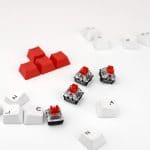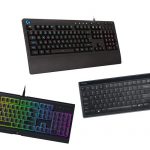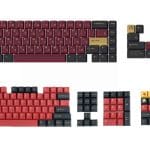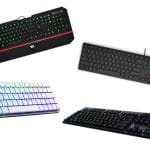
“Which keyboard layout should I get?” This is one of the first questions that any newcomer to the mechanical keyboard hobby finds themselves asking. And for a good reason too! The layout that we choose for our keyboard changes how we use it and usually contributes to our productivity.
The main difference between 60% and full-size keyboards is the size and the keys present. These two keyboards have a significant size difference. As the name implies, full-size keyboards are full-sized and feature all functionality with 104 keys, whereas the 60 percent keyboard size only has roughly 61 keys. The 60% keyboard lacks the home row, F-keys, and Numpad.
In today’s keyboard market, there are many options to choose from. There are full-size keyboards that are very common in the prebuilt keyboard market, as well as 60% small form factor keyboards that are popular in the custom keyboard market.
Full-size keyboards are what most users are familiar with. 60% keyboards, on the other hand, are unchartered territory for those who are not yet part of the custom keyboard community.
With the rising popularity of the 60% keyboards, many plan to make the jump. However, there are a few things to consider, especially those already used to full-size keyboards.
In this article, we compare the traditional 100% layout with one of the most popular form factors out on the market: the 60% keyboard. We will look at the advantages of these keyboards and the factors that users should consider before purchasing them.
Why are there Different Keyboard Sizes?
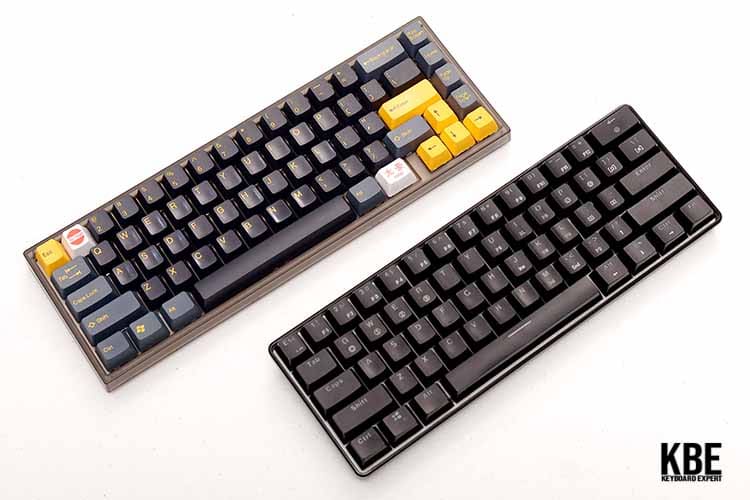
Though there are many different keyboard sizes out on the market, they originated from IBM’s iteration of the 100% format. Most keyboard hobbyists started migrating from full-sized membrane keyboards if they were not already sporting full layout mechanical keyboards from their family computers or as external input devices for their laptops.
As keyboards rose in popularity and use among stationary and mobile workstations, so too did a need for more compact versions. The smaller form factor of other keyboard sizes makes them lighter and more portable – perfect features for the digital nomads of today.
Summary of 60% Keyboards
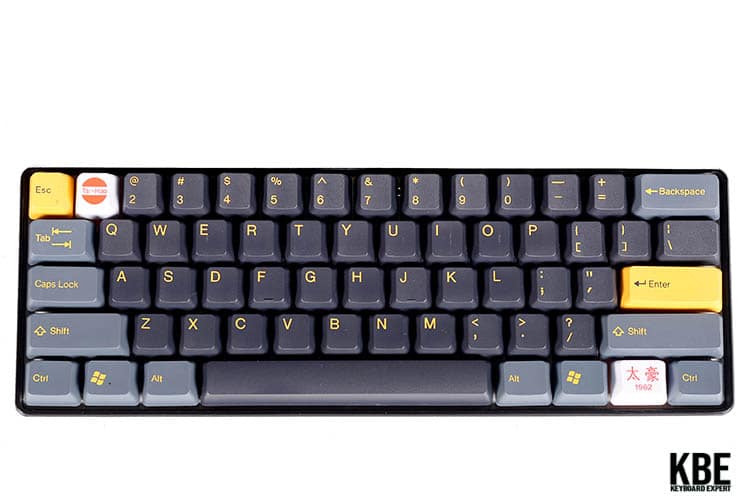
60% keyboards are the third smallest available keyboard format out on the market, coming up behind the solitary number pad and the minimal 40% keyboard. The 60% layout keyboard retains most of the typist functionality that full-size keyboards provide, trading the function keys and number pad for mobility, ergonomics, and aesthetics.
Pros of 60% Keyboards
Smaller Form Factor
The small form factor of a 60% keyboard has made it a popular choice for minimal desk, gaming, and work setups. Its compact size makes it especially neat in appearance, providing more desk space for taking down notes, sketching, or other activities.
Along with its smaller size, 60% keyboards are also lighter. The lighter weight makes the 60% keyboard a top pick among freelancers and digital nomads that often travel for work or leisure. It is also a great option for students that find themselves working or gaming on the go.
More Mouse Space for Gaming
Contrary to popular belief, most gamers prefer a smaller keyboard layout. Smaller keyboards, such as 60% keyboards, provide gamers with more space for mouse mobility. If you play a lot of FPS games, then a 60% keyboard is your best bet for performing smooth 180s in-game.
Increased Ergonomics
The keyboard’s smaller size makes typing a breeze because of the little to no distance that your fingers will be traveling per key. This is an excellent feature for hobbyists who use their 60% keyboards as their daily driver for heavy typing work.
More Economic
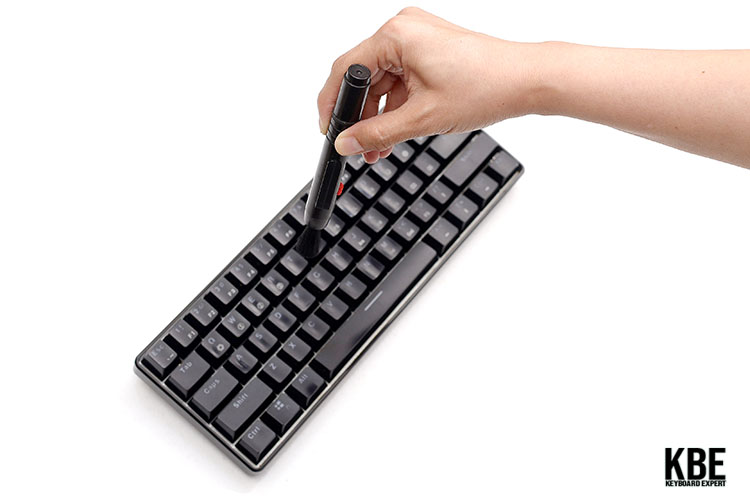
Because of their smaller frame, fully built 60% keyboards tend to cost less than their full-size counterparts. This difference in cost can be attributed to smaller material costs, labor, and arguably even utility because of the missing keys.
On the other hand, DIY or hot-swappable 60% keyboards are some of the cheapest models to maintain if you see yourself as a potential modder. With 60% keyboards, fewer materials are required for keyboard modifications, and you will also save on costs since 60% keyboards will require fewer keycaps and switches.
Cons of 60% Keyboards
Reduced Keys
Though not a problem for most, some professionals may feel the inconvenience of losing the number pad or function keys depending on the industry they work for. Accountants, programmers, and others working in highly technical fields that work with numbers may feel the absence of these keys a little more strongly than others.
Keybinding Woes
The necessity for keybinding may arise because of the reduced keys on the 60% layout. Be sure to download any software should your keyboard come with one, as keybinding can be necessary for gaming and other activities to replace keys such as the arrow keys, function keys, print screen, and page navigation buttons.
Large Learning Curve
If you are transitioning for a full layout, chances are you will require an adjustment period to get used to the size and layout of your new 60% keyboard. Though the adjustment may take some time and cause some mistakes along the way, the payoff will be worth it if the pros of the 60% greatly outweigh the cons in your priorities.
Popular 60% Custom and Prebuilt Keyboards
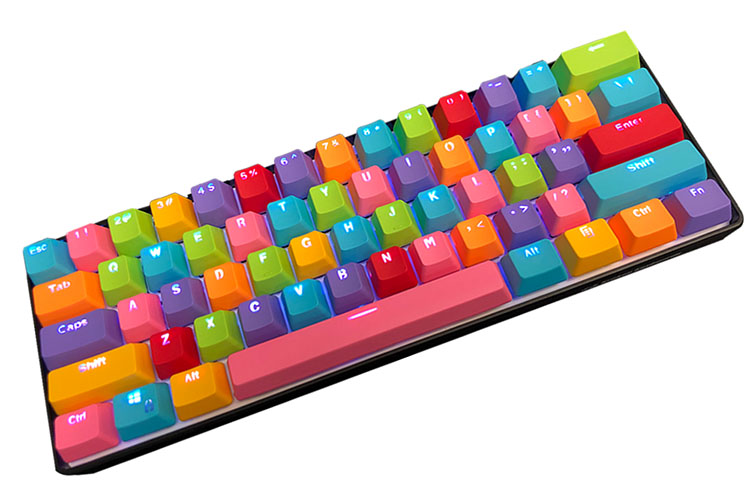
Prebuilt 60% Keyboards
- Royal Kludge RK61
- GamaKay K61
- Redragon K530 Draconic60
- Ducky One 2 Mini
Custom 60% Keyboards
- KBDFans Tofu60
- CannonKeys Brutal60
- Singa Unikorn
- Monstargears Sangeo60
Summary of Full-Size Keyboards

If this is your first foray into the world of hobby keyboards, then full-size keyboards are most likely the layout you are used to. The most traditional and classic keyboard format, 100% layouts pack on the full functionality of the complete 104 keys as first used in the pioneering IBM keyboard format. Featuring a dedicated number pad on the right-hand side as well as a full row of function keys up top, this keyboard format has remained the standard for most corporate offices and professional settings.
Pros of Full-Size Keyboards
Complete Keys
Typists, gamers, and professionals that rely on the full utility of the number pad and function keys will enjoy the presence of these said keys on the 100% layout. Buying a 100% keyboard means that you will not have to worry about buying a dedicated Numpad to meet your needs if you are sporting a smaller form factor for aesthetics.
Tried and Tested
The full layout is what most of us have trained to use as early as our school days. Because of this, the 100% layout comes more naturally to us during usage. Say goodbye to mistakes brought about by steep learning curves and stick to a format that you know like the back of your hand!
Widely Available
Being the classic layout, most stores are more likely to carry the traditional 100% keyboard format. If you prefer to shop for your keyboard in person or like having the peace of mind that you can easily replace your keyboard should anything happen to it, then a full layout may be your cup of tea.
No Keybinding Necessary
Unlike smaller keyboard layouts, 100% layout users can enjoy all of the functions that a classic layout can provide. Eliminate the need for keybinding and additional adjustments entirely by purchasing a keyboard that has everything you need right at your fingertips, literally.
Cons of Full-Size Keyboards
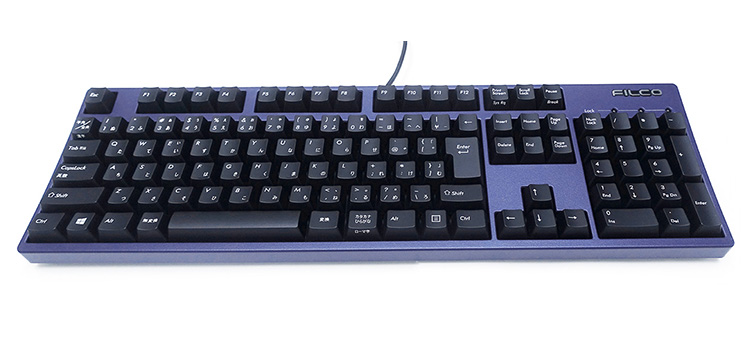
Large Form Factor
The complete keys of a full-size keyboard do come with a price. In exchange for all 104 keys, you sacrifice aesthetics. The size of your keyboard can easily make your desk look cluttered or cramped if you are not careful.
The large format of your keyboard also means that it leans on the heavier side. If you are a freelancer or student that is often on the go, then a 100% keyboard is too much of a stretch for you to fit in your back and tote with you to school or work.
Less Ergonomic
The large size of your full layout keyboard also means that you may have to stretch your fingers or move your hands along the wrist section to strike your desired keys. This can potentially cause increased strain or even injury to your fingers and wrist if you don’t invest in a good quality wrist rest to alleviate some of the pressure that the constant shifting will entail.
Wasted Desk Space
Beyond the aesthetics, you may also have to sacrifice valuable real estate on your desk. You can better utilize your desk space with a graphics tablet if you work in creative fields, or perhaps a pen and paper for jotting down notes. Even gamers might lament the wasted mouse space, which could cost them a loss or two during intense in-game face-offs and duels.
Popular Full-Size Custom and Prebuilt Keyboards
Budget Full-sized Keyboards:
- Royal Kludge RK918
- Machenike K600 Mechanical Keyboard
- Akko 9009
Premium Full-sized Keyboards:
Full-Size and 60% Keycap Compatibility

When purchasing keycaps to mod your keyboard, it is important to review the layouts available in the design you want and the keycap profile that you are looking to purchase. Most keycaps are compatible with Cherry MX-style switches.
These are the most common type of switches with the switch housing, spring, and cross-shaped stem. Gateron, Outemu, Holy Pandas, and Durock switches are only some of the switches that follow the Cherry MX style.
Because full-size keyboards are so common, you will also find that most, if not all, keycaps will fit them just right. However, 60% keyboards may prove to be a little bit trickier to find keycaps for because of the varying sizes of the keys themselves, depending on which brand of keycap and keyboard you opt for.
Generally, most standard ANSI layout 60% keyboards will be fine. However, HHKB 60% keyboards will need special keys such as a 7U spacebar, a 1.5U backspace, and a 1.75U right shift key.
Which Keyboard Size Should You Buy?
Choosing between the 60% and 100% keyboard layout is ultimately up to you. Both have their unique pros and cons, as well as their fair share of fans and critics. We recommend trying out both models to see what feels more natural.
However, if that is not an option, here is our recommendation. We recommend the 60% form factor for users who prefer lighter, more compact keyboards that are easy to grab and go for work. On the other hand, the full layout is an excellent choice for professionals and students that make full use of its available keys.
We hope this article helped you narrow down your decision by comparing the two form factors. For more keyboard news, reviews, and tips, stay tuned and check back on our website regularly!
Still not sure which size – check out 60% vs. 75% Keyboards
